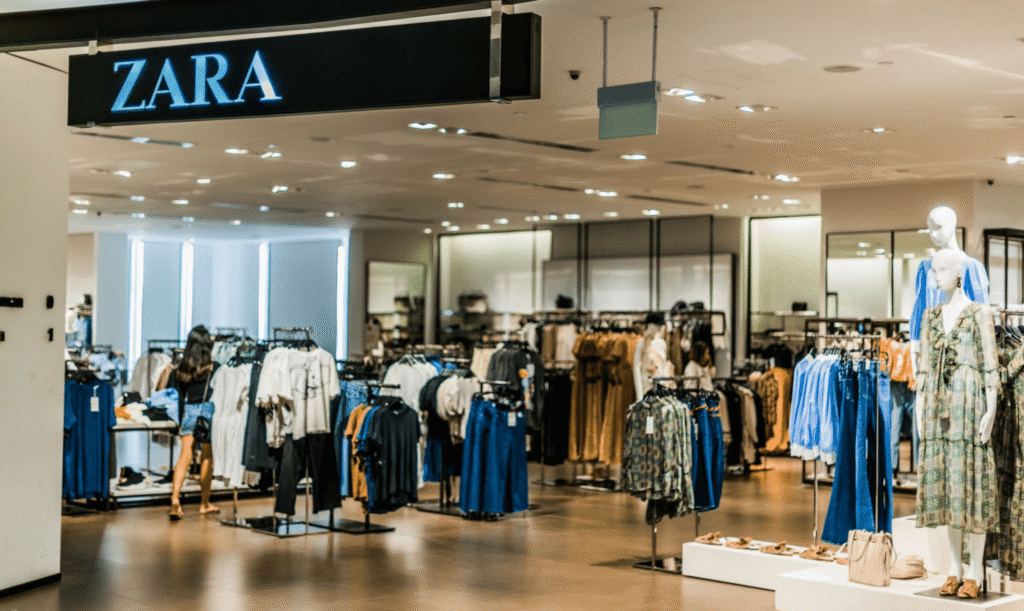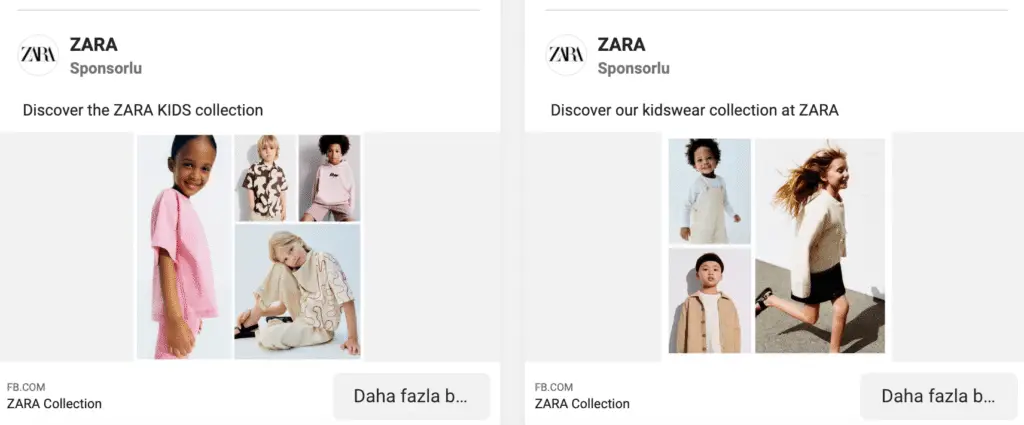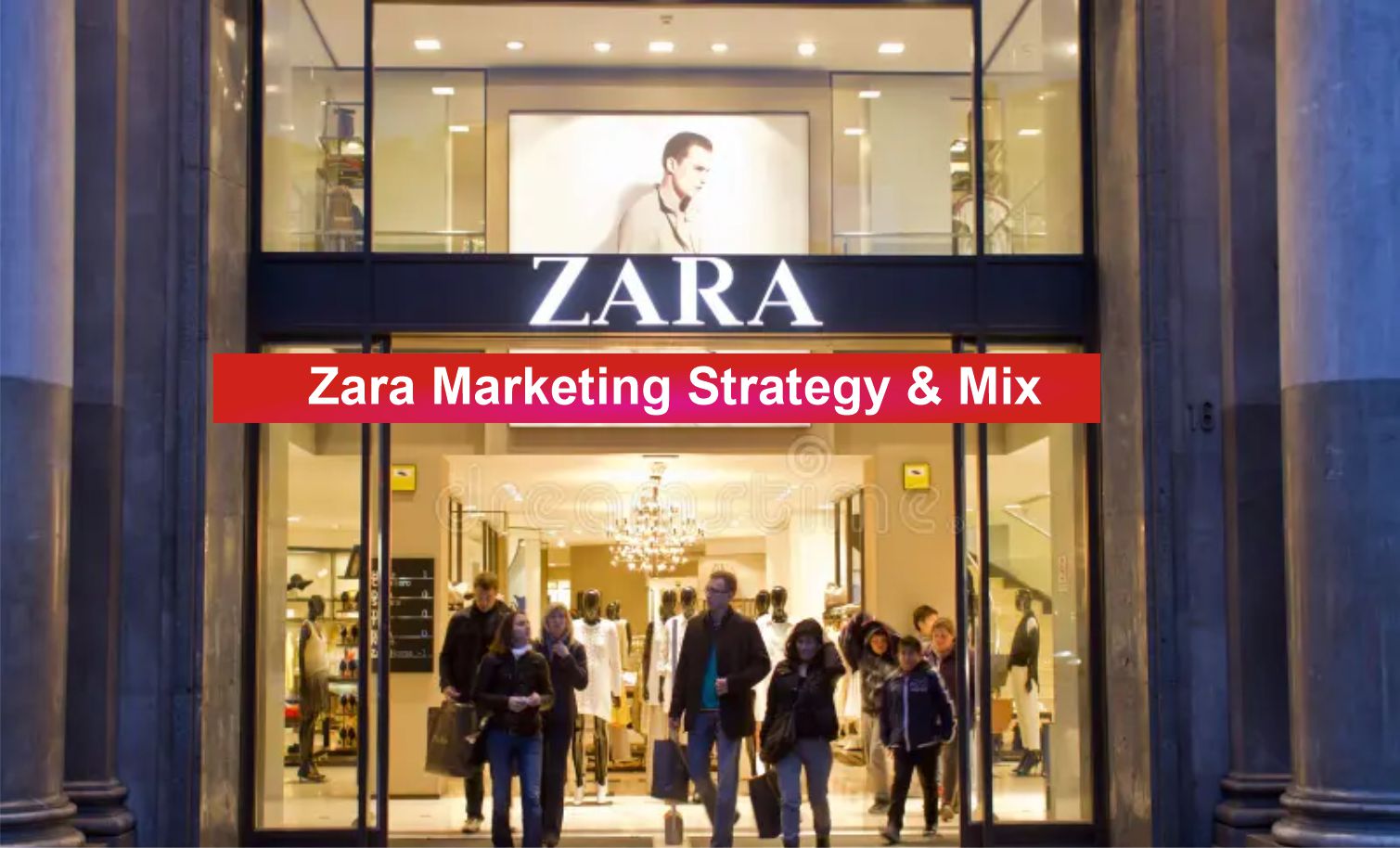Unpacking Zara’s Marketing Strategy & Marketing Mix: How the Fast Fashion Giant Wins Worldwide
When it comes to fast fashion dominance, few brands have mastered the market quite like Zara. The Spanish retailer, part of the Inditex Group, has built an empire on speed, style, and strategic marketing—delivering runway-inspired designs to store shelves in as little as two weeks.
Unlike many competitors, Zara doesn’t rely heavily on expensive ad campaigns. Instead, the brand’s marketing machine is fueled by customer insight, trend responsiveness, and an innovative retail model that blends offline and online experiences.
In this guide, we’ll break down Zara’s marketing mix, strategies, campaigns, and audience insights, plus real-world case studies that show why their approach works—and what lessons other brands can take away.
Zara’s Marketing Mix and the 4Cs Model

While most marketing courses focus on the 4Ps—Product, Price, Place, Promotion—Zara takes a customer-first approach based on the 4Cs, a model introduced by Bob Lauterborn in 1990:
- Customer Requirements – Understanding and anticipating what customers want.
- Cost to the Customer – Delivering value while maintaining profitability.
- Convenience – Making the buying process seamless online and offline.
- Communication – Building engagement through brand touchpoints.
Zara’s ability to adapt these principles has helped it become one of the most recognizable fashion brands in the world.
1. Customer Requirements – The Scarcity Strategy
- Zara’s target shoppers—primarily educated, style-conscious individuals aged 25–45—want trend-driven pieces at accessible prices.
- By producing limited quantities, Zara creates a scarcity effect: customers know if they like something, they must buy it immediately or risk missing out.
- This constant rotation of new styles keeps the brand fresh and exciting, driving frequent store visits.
2. Cost to the Customer – Affordable Fast Fashion
- Zara keeps prices low through:
- Design adaptation – Quickly reinterpreting high-end designs spotted at fashion weeks.
- Efficient supply chains – Manufacturing in nearby regions (like Spain, Portugal, Morocco) to cut shipping times and costs.
- Minimal advertising spend – Letting store windows and social media presence do the marketing.
- While this has sparked plagiarism lawsuits, it remains a key reason Zara can offer luxury-inspired styles at high-street prices.
3. Convenience – Seamless Shopping
- Zara’s flagship stores average over 930 square meters, offering open layouts and easy navigation.
- The website and mobile app mirror the in-store experience, with:
- Real-time stock updates.
- Easy returns.
- Omnichannel services like “Click & Collect” and “Find in Store.”
- This ensures customers can shop on their terms, whether online, in-store, or a mix of both.
4. Communication – Minimalist but Effective
- Zara’s sales staff are trained style advisors, offering curated suggestions.
- Marketing communication is subtle—artistic campaign imagery, curated lookbooks, and editorial-style social content rather than hard-selling.
- Instead of pushing promotions, Zara’s messaging focuses on aesthetic inspiration.
Zara’s Target Audience
Zara’s sweet spot is Millennials and Gen Z who want:
- Trendy fashion without luxury prices.
- Frequent new arrivals to match fast-moving social media trends.
- A shopping experience that is mobile-first and fashion-forward.
Key audience characteristics:
- Urban professionals, students, and creatives.
- Highly engaged on Instagram, TikTok, and Pinterest.
- Motivated by FOMO (fear of missing out) due to limited stock.
Zara Home widens the demographic to include 30–45-year-old design-conscious homeowners seeking stylish interiors.
SWOT Analysis of Zara
Strengths
- Lightning-fast supply chain (2-week turnaround).
- Strong global store presence.
- Consistent brand image and visual identity.
- Limited inventory model drives urgency.
Weaknesses
- Perceived lower product quality.
- Criticism for lack of originality.
- Minimal size inclusivity compared to competitors.
Opportunities
- Growth in e-commerce and mobile app shopping.
- Expanding sustainable collections.
- Strengthening presence in emerging markets.
Threats
- Growing competition from SHEIN, H&M, and ASOS.
- Consumer backlash against fast fashion sustainability issues.
- Risk of over-saturation and brand fatigue.
Source: Hu Duoyan
Zara’s Marketing Strategies
Unlike traditional retailers, Zara spends less than 0.3% of revenue on advertising. Instead, they invest in prime retail locations, visual merchandising, and social buzz.
Here’s how that plays out across channels:
1. Traditional Marketing – The Low-Ad Approach
- Rare use of TV or print ads.
- Occasional placements in Vogue, Elle, and Harper’s Bazaar to maintain prestige.
- Storefronts double as billboards in high-footfall areas like Fifth Avenue in NYC or Oxford Street in London.
2. Social Media Strategy – Art Over Ads
- Instagram (60M+ followers): Focuses on editorial-style imagery rather than promotional banners.
- YouTube: Behind-the-scenes videos, lookbooks, and runway-style presentations.
- TikTok: Leveraging user-generated “Zara haul” videos to go viral without paid promotion.
- Visuals are minimalist, moody, and art-driven, reinforcing a premium yet accessible feel.
3. Advertising Strategy – Campaigns That Resonate
a. Join Life (2016 – Present)
- Showcases Zara’s commitment to sustainable fabrics like organic cotton, recycled polyester, and Tencel.
- Signaled a pivot toward eco-conscious fashion amid growing scrutiny of fast fashion’s environmental impact.
b. I Am Denim (2015)
- Celebrated individuality through real people styling denim in their own way.
- Showed denim’s versatility and timeless appeal.
c. Shape the Invisible (2018)
- Collaboration with the Royal Danish Academy of Fine Arts.
- Students redesigned past-season clothes, aligning with upcycling trends and highlighting emerging talent.
4. Digital Marketing – Targeted & Tactical

- PPC Ads on Google and Facebook targeting:
- Fashion-conscious shoppers.
- Men’s, women’s, and kids’ categories.
- Retargeting campaigns for abandoned carts.
- App notifications for new arrivals and limited drops.
- Online imagery shifting toward lifestyle-driven shots rather than purely editorial poses.
Brand Comparisons: What Zara Does Differently

- H&M – Heavier reliance on celebrity collaborations and frequent promotions; Zara opts for exclusivity over discounts.
- SHEIN – Ultra-fast online drops but lacks physical store experiences; Zara blends digital with luxury retail spaces.
- Uniqlo – Focus on timeless basics; Zara focuses on ever-changing seasonal trends.
Expanded Zara Campaign Case Studies
1. The Zara Pop-Up Experience in Tokyo
- Temporary concept store with limited edition products.
- Created urgency and media coverage.
- Boosted brand buzz in the Japanese market.
2. AR-Powered Store Windows
- In select cities, Zara’s store windows used augmented reality to let passersby “try on” outfits via their smartphones.
- Increased foot traffic and social shares.
3. Zara Kids Interactive Displays
- In flagship stores, touchscreens allowed parents and kids to explore product details and styling ideas.
- Blended fun and functionality.
SEO-Rich FAQs: Zara Marketing Strategy
Q1: What makes Zara’s marketing strategy unique?
Zara’s strategy is built on speed, scarcity, and style—releasing new collections twice a week and limiting stock to encourage fast purchasing decisions.
Q2: Does Zara advertise heavily?
No. Zara spends a fraction of what competitors do on ads, instead relying on store locations, visual identity, and social buzz.
Q3: How does Zara use social media for marketing?
Through artistic, editorial-style content that inspires rather than sells directly, plus encouraging organic UGC like #ZaraHaul.
Q4: What is Zara’s approach to sustainability?
The Join Life initiative promotes sustainable fabrics and responsible manufacturing, though critics say more transparency is needed.
Q5: Who is Zara’s target audience?
Fashion-conscious Millennials and Gen Z seeking affordable runway-inspired looks with fast turnaround.
Key Takeaways for Businesses
- Scarcity drives urgency—Limited stock increases purchase speed.
- Storefronts can be your best ad space—Prime locations double as marketing.
- Artistry sells without hard-selling—Inspire customers visually.
- Speed beats size—A fast supply chain can outpace even bigger competitors.
- Digital + Physical integration wins—Omnichannel shopping is the future.
Conclusion
Zara’s marketing strategy proves you don’t need big ad budgets to dominate a market—you need customer insight, fast response, and brand consistency. By mastering the 4Cs and combining scarcity, speed, and style, Zara has redefined fast fashion and kept competitors playing catch-up.
Whether you’re in fashion or any other industry, Zara’s approach shows the value of knowing your audience, delivering at their pace, and letting your brand image do the talking.
Learn Also: Sephora’s Marketing Strategies

